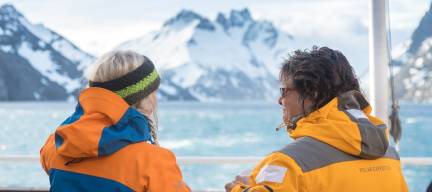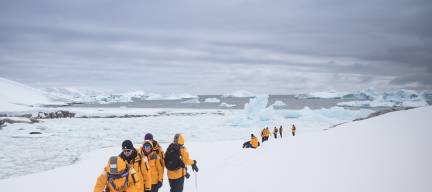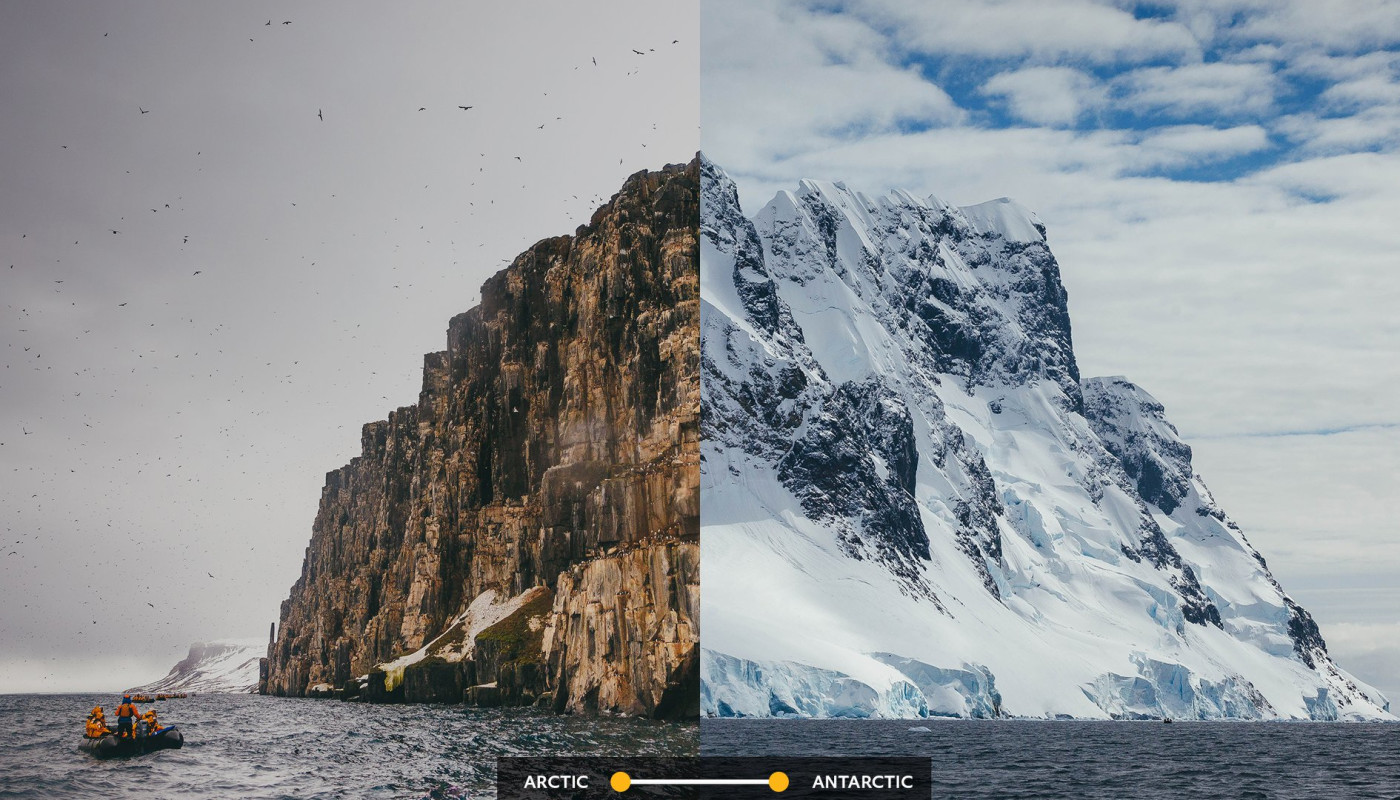
featured – 7 min read
How to choose between the Arctic and Antarctic for your Polar Voyage
Antarctic
See All
4 mins read
Polar Trips Filled with Active Off-ship Adventures
For many travelers, a vacation means more than just sightseeing—it’s about pushing limits, embracing adventure, and immersing in landscapes few have ever seen. Adventure trips in the polar regions are gaining momentum, especially among travelers who crave both physical challenge and the chance to witness untouched wilderness. Combining athletic activities with immersive exploration, these expeditions offer everything from kayaking alongside glaciers to multi-hour hikes across ice-sculpted terrain. Unlike traditional itineraries, these journeys are designed for active explorers who want more than just a scenic cruise. For instance, those joining an Arctic cruise have the opportunity to not only sail past towering icebergs but also paddle through icy channels or trek across remote valleys. Imagine skiing beneath the midnight sun or kayaking in perfectly still waters, while polar bears roam the distance. One highlight of active trips is the balance between guided exploration and personal achievement. On the Svalbard Explorer: Best of High Arctic Norway, travelers can kayak near calving glaciers or embark on challenging hikes that reveal the raw, rugged beauty of the Arctic. This type of experience goes far beyond the average tour: it blends adventure, stamina, and an appreciation for one of the most extreme environments on the planet. Another appeal is accessibility. Even if you’re not an elite athlete, these hybrid adventures are tailored for people with different fitness levels. Expert guides ensure that activities like sea kayaking or long treks are safe and rewarding. The goal isn’t competition—it’s about deeper connection. A calm paddle through a fjord reveals seals resting on […]
Read Post

4 mins read
The Power of Solitude and Self-Reflection in the Polar Regions
Read Post

4 mins read
Iceberg Photography Tips from Expedition Experts
Read Post
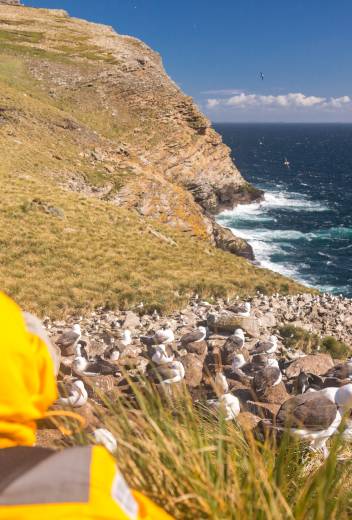
4 mins read
Island Hopping in the South Atlantic: Discovering the Unique Charm of the Falkland Islands
Read Post

4 mins read
Crossing the Drake: What First-Time Antarctic Travelers Need to Know
Read Post
Arctic
See All
4 mins read
What It’s Like to Sail Across the North Atlantic to the Arctic
There’s a distinct kind of thrill that comes with venturing into the far north—watching the world around you transform from emerald coastlines to snow-draped horizons. An Arctic cruise from Scotland to Spitsbergen isn’t just a voyage—it’s a moving panorama of history, wildlife, and wild seascapes that few travelers ever experience. The journey traces ancient sea routes that once guided explorers, scientists, and storytellers alike. Today, travelers aboard modern expedition vessels get to experience the same blend of mystery and majesty—crossing shifting latitudes that tell the tale of the North Atlantic’s diverse marine world. On the Scotland to Spitsbergen: Puffins, Sea Ice, and Wildlife voyage, guests witness nature’s gradual transformation—an unfolding narrative of contrasts and wonder. Learn more about similar polar journeys through our Arctic expedition collection. The Gateway: Scotland’s Wild Northern Coast Your adventure begins in Scotland, where ancient cliffs meet the restless sea. Seabirds soar above rugged headlands, and puffins nest in colonies that have thrived for centuries. The Scottish isles—Orkney, Shetland, and Fair Isle—form the perfect starting point for the Scotland to Spitsbergen expedition. Each island feels like a world unto itself, with Viking heritage, coastal charm, and sweeping views that stretch endlessly to the horizon. As the ship sails north, the air turns crisper, and the Atlantic grows deeper and darker. It’s here, far from the bustle of modern life, that travelers begin to feel the pulse of true expedition travel—a rhythm shaped by wind, waves, and the vastness of the open sea. Across the North Atlantic: Where Worlds Collide Crossing the […]
Read Post

4 mins read
Whales of the High Arctic: Species You’ll Encounter in Svalbard
Read Post

4 mins read
Polar Trips Filled with Active Off-ship Adventures
Read Post

4 mins read
Practicing Wellness on an Arctic Expedition
Read Post

4 mins read
Polar Bear Viewing Ethics and New Distance Rules in Svalbard
Read Post
Experiences
See All
4 mins read
Polar Trips Filled with Active Off-ship Adventures
For many travelers, a vacation means more than just sightseeing—it’s about pushing limits, embracing adventure, and immersing in landscapes few have ever seen. Adventure trips in the polar regions are gaining momentum, especially among travelers who crave both physical challenge and the chance to witness untouched wilderness. Combining athletic activities with immersive exploration, these expeditions offer everything from kayaking alongside glaciers to multi-hour hikes across ice-sculpted terrain. Unlike traditional itineraries, these journeys are designed for active explorers who want more than just a scenic cruise. For instance, those joining an Arctic cruise have the opportunity to not only sail past towering icebergs but also paddle through icy channels or trek across remote valleys. Imagine skiing beneath the midnight sun or kayaking in perfectly still waters, while polar bears roam the distance. One highlight of active trips is the balance between guided exploration and personal achievement. On the Svalbard Explorer: Best of High Arctic Norway, travelers can kayak near calving glaciers or embark on challenging hikes that reveal the raw, rugged beauty of the Arctic. This type of experience goes far beyond the average tour: it blends adventure, stamina, and an appreciation for one of the most extreme environments on the planet. Another appeal is accessibility. Even if you’re not an elite athlete, these hybrid adventures are tailored for people with different fitness levels. Expert guides ensure that activities like sea kayaking or long treks are safe and rewarding. The goal isn’t competition—it’s about deeper connection. A calm paddle through a fjord reveals seals resting on […]
Read Post

4 mins read
Empower Your Inner Explorer: Why a Solo Polar Trip is the Ultimate Self-Discovery Journey
Read Post
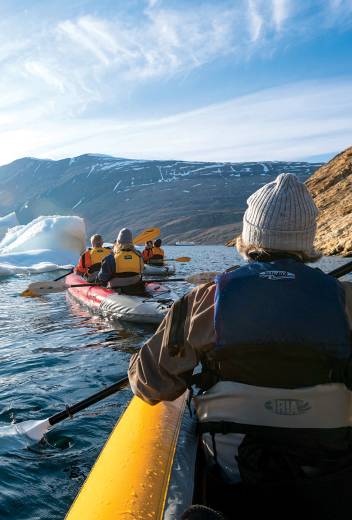
4 mins read
First Timer's Guide to Choosing Your Perfect Polar Adventure Activity
Read Post
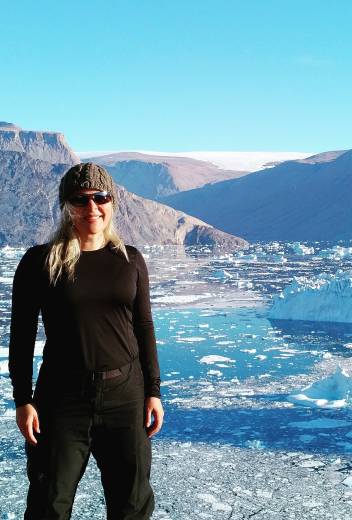
5 mins read
Retreating into Greenland’s Fjords: One Woman’s Arctic Expedition Journey
Read Post
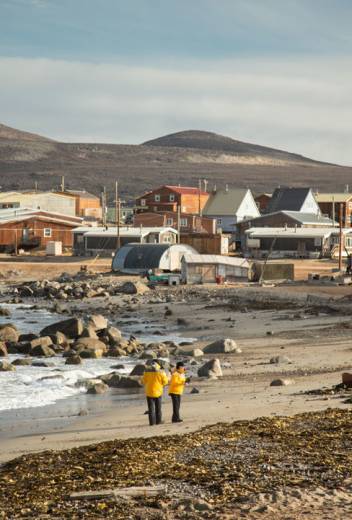
9 mins read
Arctic Communities: Understanding Their Connection to The Remote North
Read Post
Know Before You Go
See All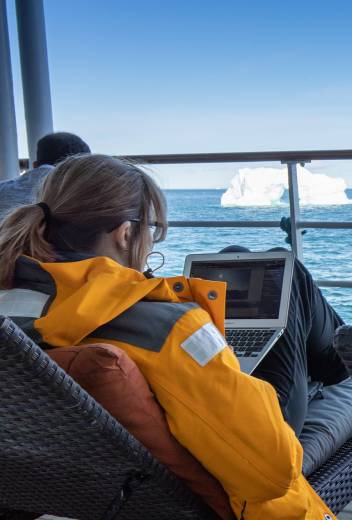
5 mins read
Raise a Glass and Stay Connected: Free Wi-Fi and Alcohol on Our Expedition Cruise Ships
Free Wi-Fi and alcohol on Quark Expeditions’ voyages includes beer, wine and cocktails, as well as basic Internet service while exploring the Arctic and Antarctic.
Read Post
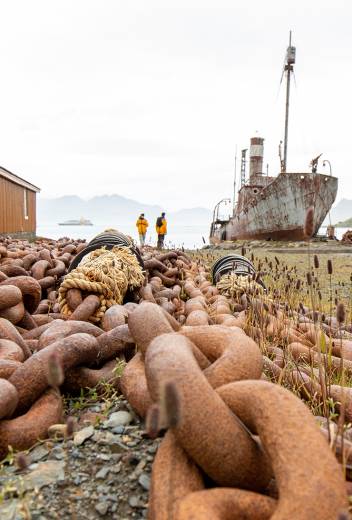
8 mins read
Grytviken, South Georgia Travel Guide
Read Post
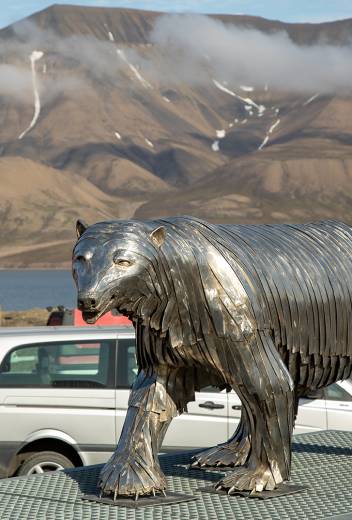
8 mins read
Best Time to Visit Longyearbyen
Read Post
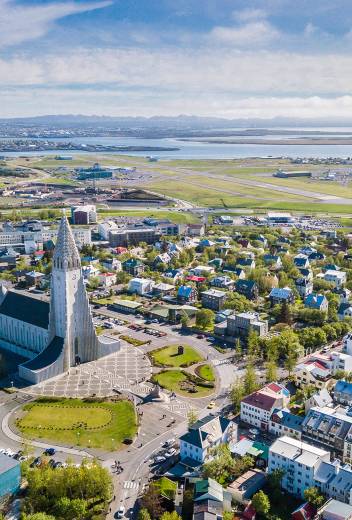
11 mins read
25 Best Things to Do in Reykjavik
Read Post

1 min read
How to Dress in the Polar Regions
Read Post
News
See All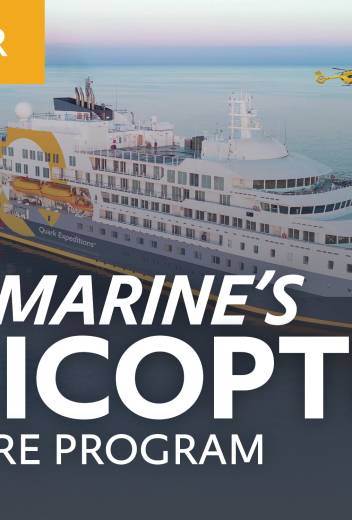
1 min read
Learn About Ultramarine’s industry-leading helicopter adventure program
Business Development Manager Chris Hanna, Expedition Guide and Glaciologist Colin Souness, and Director of Helicopter Operations Felix Christians share highlights of Ultramarine’s industry-leading helicopter adventure program. Join the webinar to learn about Quark Expeditions’ heli-adventure program: • Unbeatable Polar Helicopter Experiences: Learn how our two twin-engine helicopters can take you further over the polar landscape than any other helicopter in its class, offering the largest portfolio of adventure options in the industry—including flightseeing, heli-hiking, alpine kayaking and exclusive heli-landing. • Most Experienced Crew: Learn what makes our helicopter crew the best in the Polar Regions. • Adventure Meets Luxury: Discover why these helicopters ensure guests will have a superbly comfortable flight—and are great for viewing the polar landscapes. • Industry-leading Polar Safety: Find out what makes our H145 helicopters the industry leaders in helicopter safety. • Advanced Sustainability: Learn about the sustainability features of the H145 helicopters.
Read Post

1 min read
Arctic 2025 Season Overview
Read Post

5 mins read
Raise a Glass and Stay Connected: Free Wi-Fi and Alcohol on Our Expedition Cruise Ships
Read Post
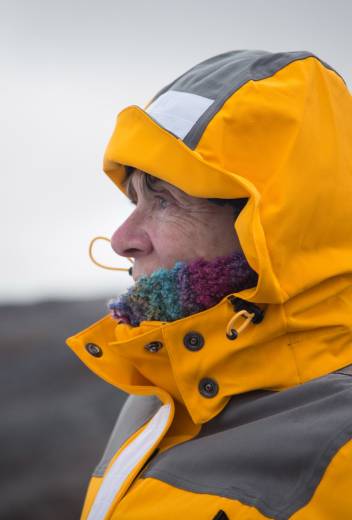
1 min read
Introducing the New Quark Parka
Read Post

6 mins read
Penguins on Ice: How a Hobbyist Captured an Award Winning Photograph
Read Post
Polar Learning Channel
See All
1 min read
Antarctica gives up its secrets
Many countries support scientific research projects in Antarctica, ranging from biology and glaciology to oceanography and astronomy. These scientific studies explore such question as: How fast are the glaciers moving? How many seals are there? What lies under two miles of ice? Quark Expeditions ornithologist Jean Pennycook will highlight several new discoveries and current projects in this webinar that uncovers the secrets of the Antarctic.
Read Post

1 min read
Arctic vs. Antarctic: Identifying the Differences
Read Post

1 min read
Fate of Sir John Franklin
Read Post
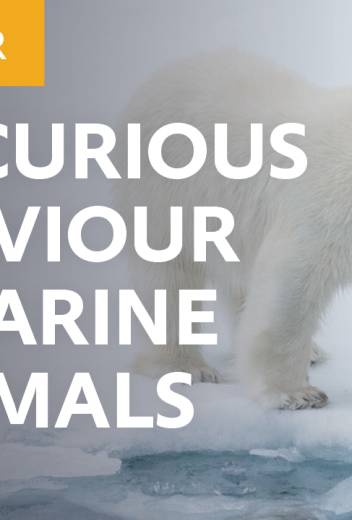
1 min read
The Curious Behavior of Marine Mammals
Read Post

1 min read
Conservation of Whales, Penguins and Petrels
Read Post
Webinars
See All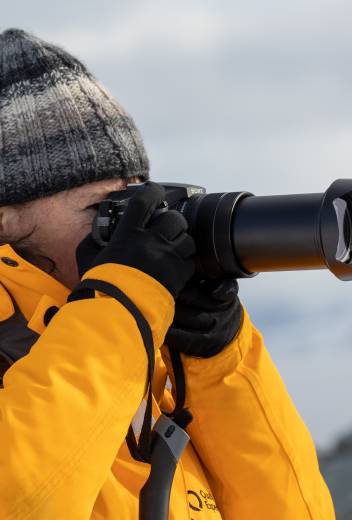
1 min read
World Photography Day: Shooting in the Polar Regions
Michelle shares her expertise in the field of photography, taking you through tips to help you identify the ideal photo opportunity, how to capture the best pictures on your phone, how to take the best wildlife photos, composition techniques, and how to choose the right camera. All to help prepare you to take the best possible shots during your adventure in the polar regions. Host: Michelle Sole, Photography Guide Michelle’s photographic work has been published in Africa Geographic and The Guardian. In her free time Michelle can be found somewhere in the wilderness with her camera in tow.
Read Post
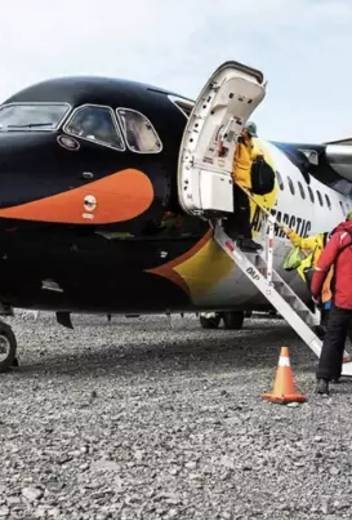
1 min read
Fly the Drake
Read Post
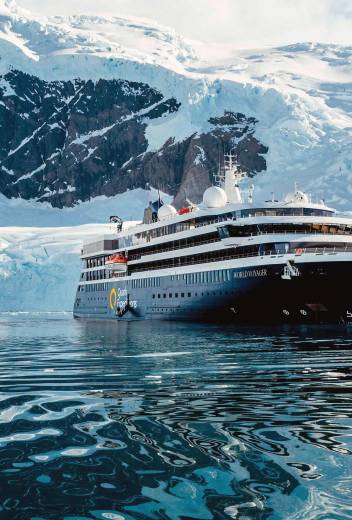
1 min read
Get To Know Our New Ship: World Voyager
Read Post
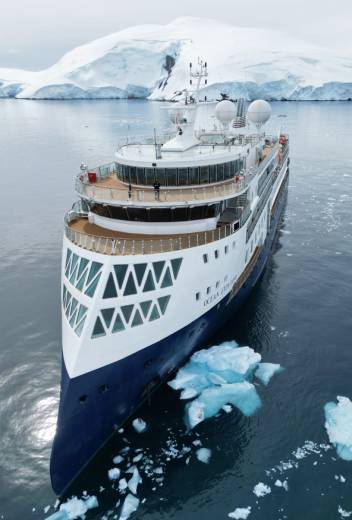
1 min read
Introducing Our New Ship Ocean Explorer
Read Post

1 min read
Antarctic 2024-2025 Highlights & Deals
Read Post
Wildlife
See All
4 mins read
Bird Migration Stories: Barnacle Geese in Svalbard
Each spring, the skies above Svalbard come alive with a remarkable spectacle: the migration of barnacle geese. These elegant birds undertake one of the most extraordinary journeys in the natural world, flying thousands of kilometers from their wintering grounds in Scotland and the Netherlands to the remote Arctic Archipelago of Svalbard. For bird enthusiasts and wildlife photographers alike, witnessing this migration is an unforgettable experience. Svalbard’s high Arctic environment offers a unique combination of accessibility and pristine wilderness, making it a prime destination for observing Arctic birds in their natural habitat. Travelers from the USA, Canada, and Australia are increasingly drawn to birdwatching trips that coincide with the geese’s arrival. On Arctic expeditions, participants can witness the flocks navigating rugged fjords, nesting in cliffside colonies, and interacting with other elements of Arctic wildlife. The Journey of Barnacle Geese Barnacle geese are remarkable for their endurance and precision. Each year, they leave temperate regions in early spring, traveling non-stop across the North Sea and over the Greenland icecap. Their migration is guided by an incredible internal compass and visual cues, enabling them to arrive in Svalbard just in time to breed and raise their young in the short Arctic summer. Observing these birds in flight is not only awe-inspiring but also offers an opportunity to study natural behavior. For wildlife photography, capturing barnacle geese in formation, gliding over icy fjords, or landing near nesting grounds can result in striking images that tell a story of resilience and adaptation. The Spitsbergen Circumnavigation: Rite of Passage is one […]
Read Post
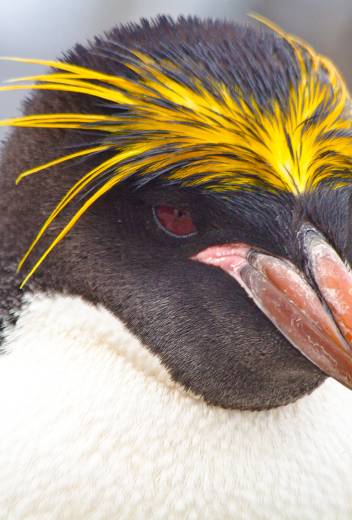
5 mins read
Wildlife Guide: Macaroni Penguin Facts
Read Post
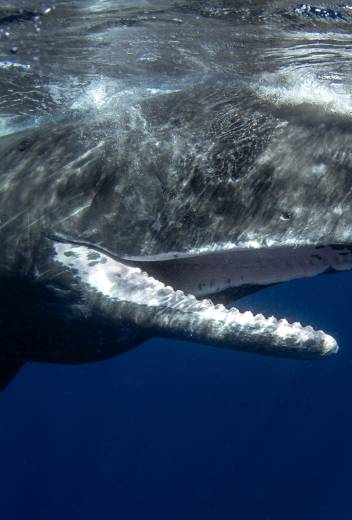
7 mins read
Wildlife Guide: Sperm Whale Facts
Read Post
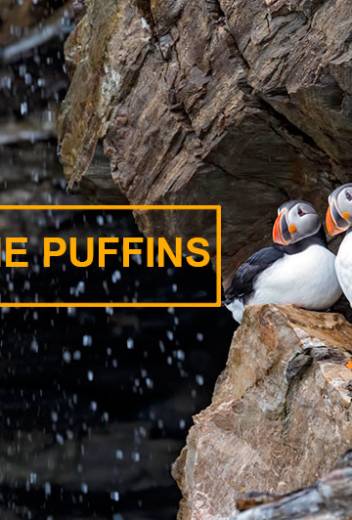
4 mins read
Meet the Puffins: Iconic Seabirds a Passenger Favorite
Read Post
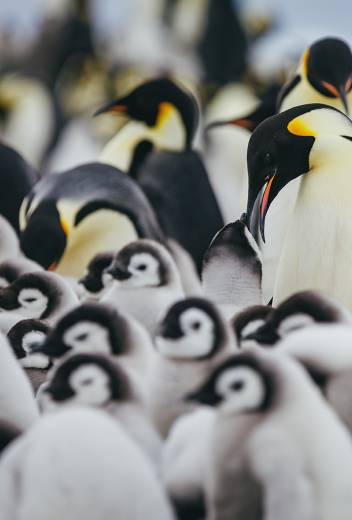
7 mins read
Wildlife Guide: Emperor Penguin Facts
Read Post




